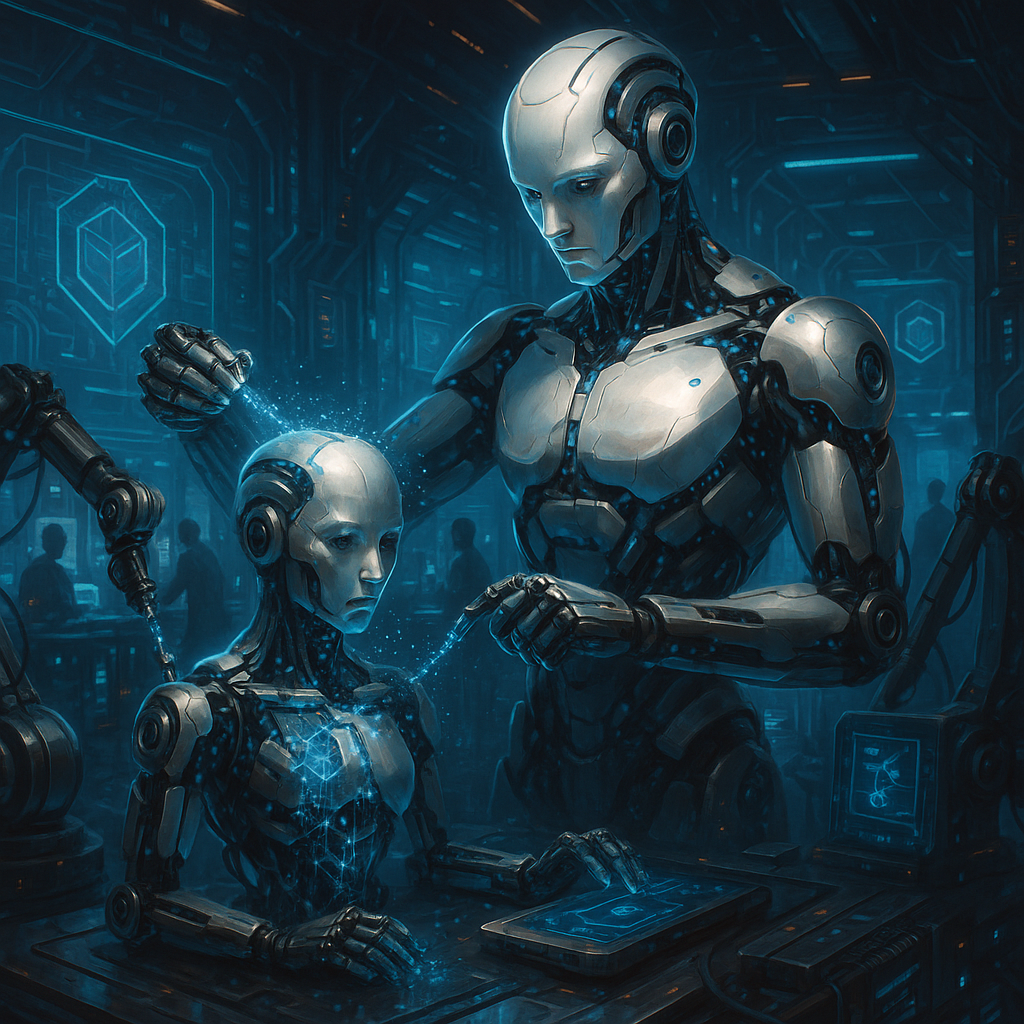We’ve all watched robots in science fiction movies making more robots — but this once-fantasy idea is becoming reality. Self-replicating robots are now under study in labs and research centers, and they might transform how we construct, discover, and even live in harsh environments.
Let’s explain what these robots are how they operate, and why they’re important — all in easy-to-understand language.
🔄 What Are Self-Replicating Robots ?
Self-replicating robots are machines that can create copies of themselves using parts or materials from their environment. They might use pre-made components or raw materials and transform them into working robots — all without human assistance.
In a nutshell, these machines can “reproduce” — not like humans or animals do , but in a mechanical and precise way.
🛠️ How Do They Work?
While this concept might seem tricky, the process is simple:
1. Get Parts
The robot collects materials from its surroundings (such as metal or plastic) or uses a bunch of ready-made parts.
2. Build the Robot
The robot puts another robot together — bit by bit — using tools like robotic arms or built-in 3D printers.
3. Turn It On
After assembly, someone programs the new robot and switches it on to work like the original.
Some of these machines have a modular design. This means they consist of blocks that fit together — speeding up the process of replication and boosting productivity.
🌍 Why Do We Need Self-Replicating Robots?
These robots show great promise especially in areas humans find hard to access or where rapid mass production is necessary.
🚀 Space Exploration
Sending a single robot to Mars that can build more robots from local materials could save millions in launch costs and help establish colonies without human crews.
⚒️ Industrial Use
Picture a construction site or remote factory where one machine can copy itself and grow the workforce without extra shipments or workers.
🌪️ Disaster Zones
In risky areas — such as earthquake zones nuclear sites, or deep underwater — a robot that can reproduce itself provides more assistance without endangering human lives.
✅ Advantages of Self-Copying Robots
- Cut Costs & Time: Fewer inputs required to build multiple units.
- Grow : One machine becomes many helping projects expand .
- Reach Further: Ideal for space, oceans, or isolated areas.
- Self-Reliance: Reduced need for human oversight.
⚠️ What Concerns Exist?
cutting-edge technology like this requires protective measures:
- Uncontrolled Expansion: A robot’s continuous replication might deplete resources or bring about disorder — people sometimes refer to this as the “grey goo” scenario.
- Safety Concerns: Cybercriminals could gain control of these devices and put them to harmful use.
- Moral Quandaries: Who bears responsibility when a robot makes a poor choice? How can we manage machines with the ability to reproduce?
These worries explain why engineers now focus on rigid guidelines and protective measures to manage self-replication before these robots see widespread adoption.
🔮 Are We in a Science Fiction Age?
We haven’t reached that point yet — but we’re nearer than we’ve ever been. A few labs have already created simple self-copying systems with 3D printing, and organizations like NASA are looking into how to use them in space.
Over the next ten years, we might see these robots being used to construct houses on the Moon, fix power lines after bad weather, or even explore the ocean depths.
